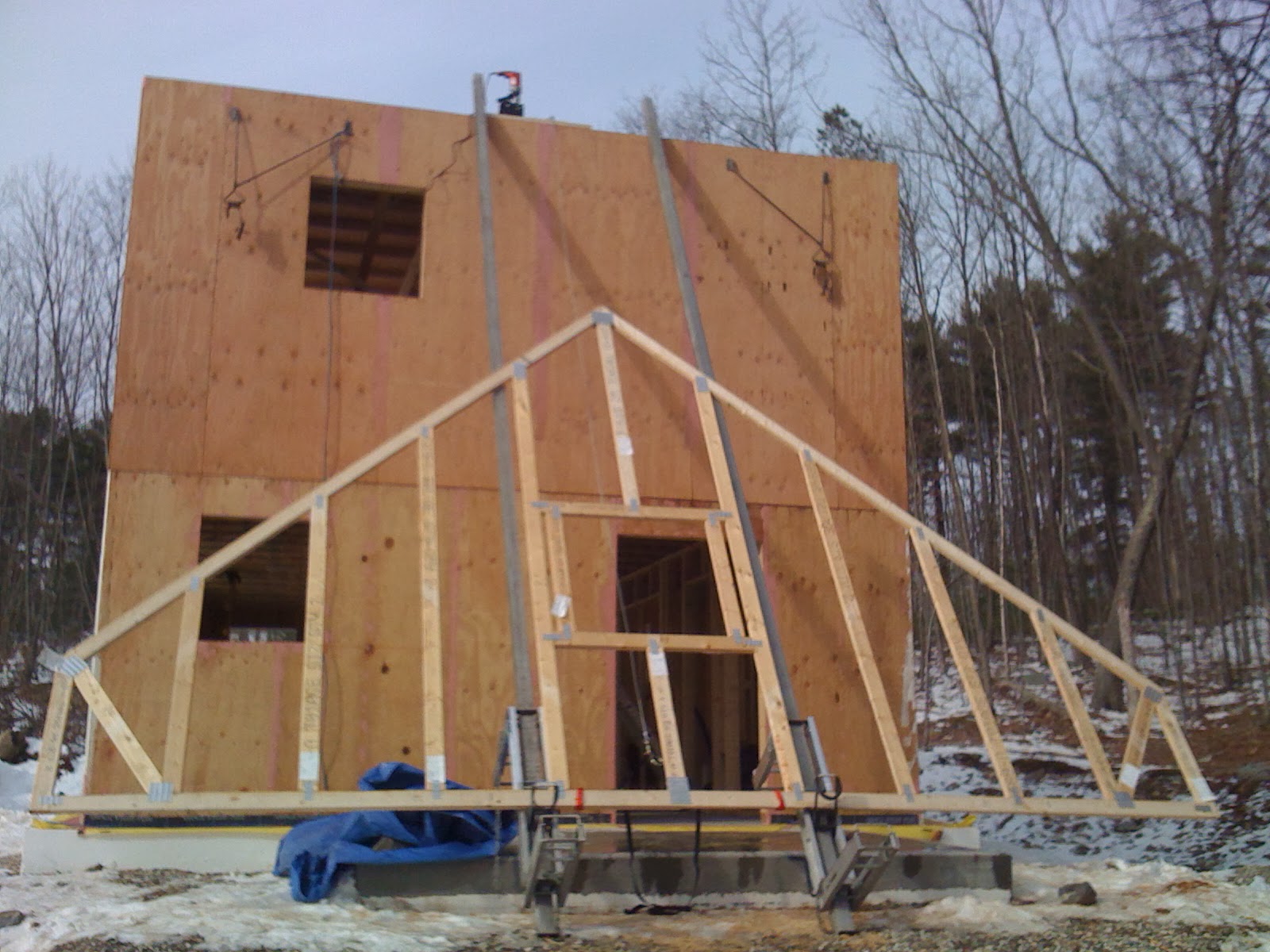One of the more challenging aspects of home construction is moving heavy and often cumbersome pieces of material around on site. When working alone it's all the more challenging. Ever since the roof trusses showed up I've been asked: how are you going to move the roof trusses to the second story.
Usually I'd tell people the lumber yard truck with its crane would move the trusses when it came to deliver the roof sheathing. Then I read BCSI-B1 Summary Sheet- Guide For Handling , Installing, Restraining, and Bracing of Trusses. Since I cut the truss bundle strapping to move the trusses by hand for storage each truss would need to be hoisted individually. Bummer. And frankly, I needed time to figure out the construction strategy which the lumber yard truck driver was unlikely to accommodate. On top of that, I wasn't all that certain the plywood lid with improvised bracing would be up to the task of supporting a stack of trusses. Best not to have someone around to witness calamity.
With the conceptual failure of the lumber yard truck, I was back to eating the elephant (lifting trusses) myself. The good news was the heaviest gable end frame weighed in at 159 lb. The bad news was I could not find a ladder lift available locally. Refusing to throw in the towel I did what any reasonably sane person who builds a house in Maine...during the worst winter in the last twenty years does. I went to Harbor Freight Tools to collect my thoughts on how I could best become a danger to myself. No one else was going to be around so there was no prospect for danger to others.
The improvised truss lifting rig is shown in the picture below.
To guide each truss in turn to the second story I used two 24' pump jack assemblies. The heaviest gable end frame loaded for action is shown below. Yes. The frame weighs more than I do. No. I did not have help moving it. Fortunately it's the middle of winter so there are slick patches of ice where I can bust my ass or make moving gable end frames easier.
 |
| Gable End Frame Awaiting Blast Off |
To rig the lifting cable to the truss simple webbing was used (see below). The legs of the rig were adjustable for length so that the lifting cable could be placed on truss centerline by eyeball. No laser alignment required.
 |
| Truss Rigging |
Photographic evidence showing the hoisted gable end frame is included below.
What about a brake? One benefit of working with cheap low quality non-precision worm gear driven equipment is that there is so much friction in the system that it acts as a full time brake that resists motion in any direction. While the winch was rated for 2000 lb. the screeching from the worm gear and acrid smoke pouring from the 1/2-inch drill at the conclusion of each lift had me wondering what would happen first: A. Truss plunges to its death due to winch failure or B. Drill catches fire and burns house down before it is jettisoned off gable end. Happily neither happened over a total of 17 successful lifts.
So, how to eat an elephant? One bite at a time.


Absolutely brilliant! You are my new hero....
ReplyDeleteAnd I didn't know there was a Harbor Freight near here.
Over near the airport!
ReplyDelete